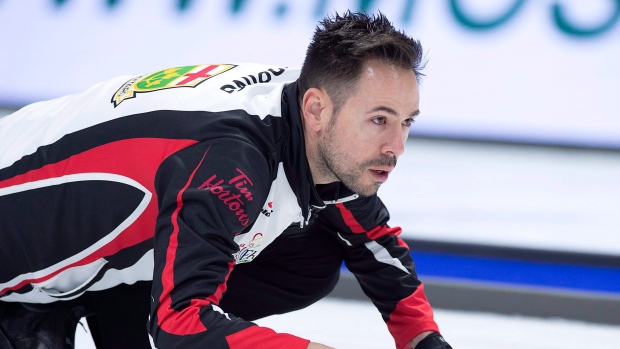Sep 26, 2019
Curlers trying to sort through ranking system
More and more, players and teams have begun to think the current system may not truly reflect what’s happening on the ice, Bob Weeks writes.
By Bob Weeks

As the curling season heats up, so has the talk of the team rankings.
More and more, players and teams have begun to think the current system that determines everything from which rinks play in national championships, Olympic qualifying and Grand Slam majors, may not truly reflect what’s happening on the ice.
There was an increase in this discussion when Ben Hebert, a Tim Hortons Brier, World and Olympic champion, sent out a message on Twitter pointing out that John Epping’s team, winners of two events in the early season, moved into second place on the World Curling Tour’s ranking.
That, in itself, wasn’t a problem, said Hebert, but the team it replaced on the list, skipped by Brendan Bottcher, ended last season by winning three Grand Slam majors and finishing runner-up at the Brier.
“[Epping] wins a small event in Oakville and then the Shorty Jenkins [event in Cornwall, Ont.] and pass Bottcher for second spot,” said Hebert. “Two WCT events that aren’t majors and are in September when lots of teams don’t have ice. The purses aren’t big but because the fields are full with the amount of teams, they get all these points.”
Hebert emphasized that he wasn’t being critical of Epping’s team, but rather the formula used to determine world ranking points. He compared it to a golfer winning three majors in that sport, being overtaken by one who was victorious in two regular-season tournaments.
In its simplest form, curling’s rankings are based on a complicated formula that takes into account the size and strength of field, the purse and an importance factor. It uses a team’s best eight results to come up with a point total. The overall ranking is operated by the World Curling Federation with other national federations using subsets for their own lists. In Canada, that’s the Canadian Team Ranking System.
The system was created five years ago by Bottcher, a math whiz, and has been tweaked since. But many players feel the game has advanced at a pace that requires another look and gives more points for bigger events.
For example, take Epping’s win the Stu Sells Oakville Tankard, an early season event with a purse of $36,000 and a field of 36 teams. It was played in a curling club without much fanfare and no television broadcast. The Epping team earned as many points for that victory as Hebert’s team skipped by Kevin Koe, received for winning last year’s Brier.
“It’s crystal clear to me that the system is broken,” Hebert said, “and I actually think this system has been around for a while and it’s served its purpose but the game has changed.”
But making changes may be easier said than done. Nolan Thiessen, a former Brier winner and now the manager, championship services and athlete liaison for Curling Canada, said that with the qualifying for spots in the Canadian Curling Trials which will determine Canada’s teams for the 2022 Olympics already underway, it would be hard to change the current system mid-stream. However he was open to looking at what changes could be made for the next quadrennial.
“I think we just need to look at it and make sure we have the right system,” he stated. “We need to look at it and ensure it’s achieving what it’s meant to be doing.”
But the man who administers the ranking, Gerry Geurts of Curlingzone.com, said that an overhaul of the system is exceptionally difficult based on all the moving parts.
“There’s definitely a push for the system to be simplified,” he admitted, “but if you do that you take away some of the precision.”
As well, Geurts said, curling’s growth internationally means more events and a difficulty in trying to be equitable across borders.
He pointed to the talk of boosting the points earned for winning the Brier as one example. It’s already given a bump due to its significance even though its final field is not as strong as most Grand Slam events. But there is a trickle-down effect on other countries.
“If we’re going to boost the importance of the Canadian national championship,” Geurts stated, “then we’re going to have to boost every other national championship around the world.”
This is one reason why the World Curling Federation took over operation of the global team ranking system from the World Curling Tour (it will still be administered by Geurts). It was becoming vital to many national curling federations to select teams for Olympic and World Curling Championship qualifying.
Hebert and many other curlers still feel that some changes are necessary and that it would benefit the game as a whole.
“It used to be that the top, most consistent teams were always in there,” stated Hebert. “Now the problem is we’re playing for decent money at the Grand Slams because of television and exposure, and everybody wants to get in, but it’s not always the most consistent teams that qualify. There are ways to get in by playing more events and smaller events, and our point system is just a little bit wacky.”
A group of players will gather at an event next week in Toronto to further discussions. Geurts and Thiessen are both open to anything that will improve the system but as with anything this complex, it will likely take time before anything significant happens.
